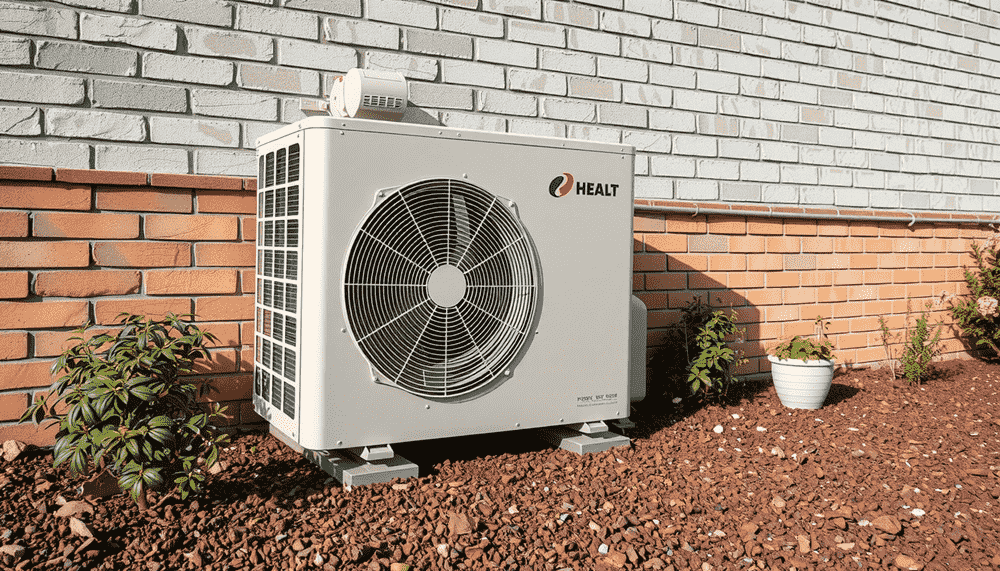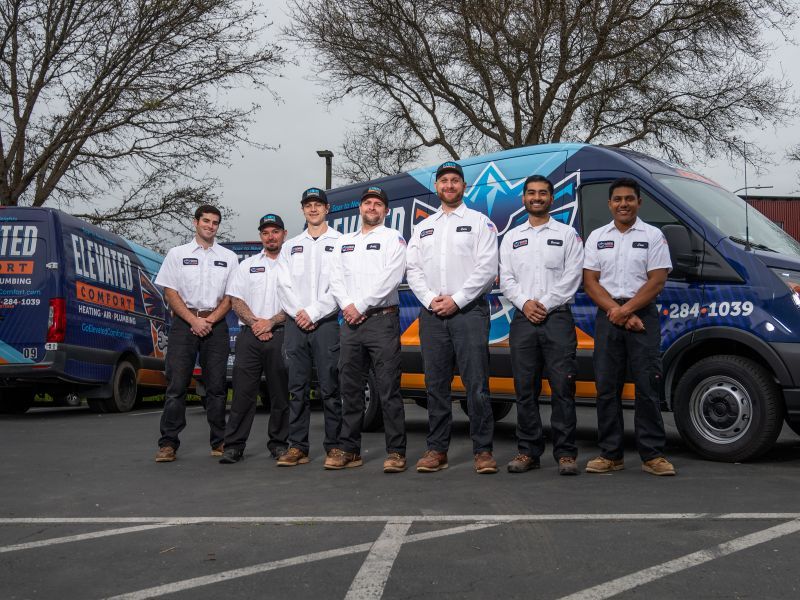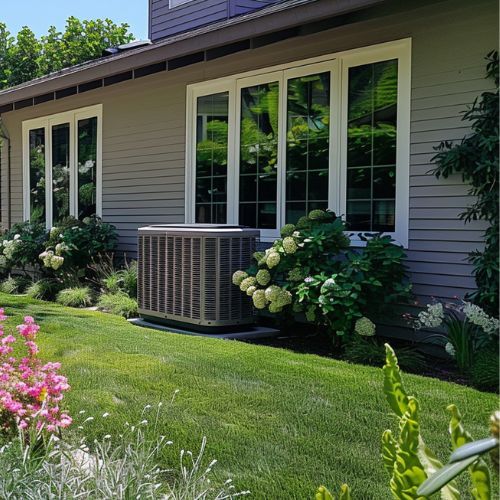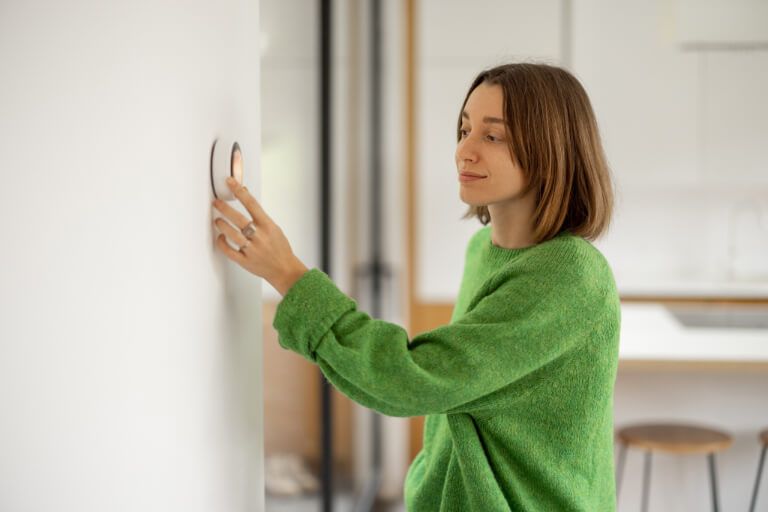Why Your Heat Pump Isn’t Keeping Up This Fall and How to Fix It

Table of Contents
ToggleKey Takeaways
- Reduced airflow, low refrigerant, and dirty coils are the most common causes of poor fall heat pump performance.
- Strange noises or uneven heating signal underlying mechanical or electrical issues that need prompt inspection.
- Seasonal maintenance and timely repairs help your system run efficiently and prevent costly winter breakdowns.
When temperatures in Northern California start to dip, homeowners rely on their heat pumps to keep indoor spaces warm and comfortable. But as the first cool mornings arrive, many discover their systems aren’t performing like they should: running longer, blowing lukewarm air, or leaving some rooms noticeably colder than others.
If your heat pump isn’t keeping up this fall, it’s not necessarily a sign the unit has failed. In most cases, it’s the result of minor issues that develop over the cooling season and surface once heating mode kicks in. Addressing these early can prevent a small problem from turning into a costly mid-winter emergency.
This guide covers the most common reasons heat pumps struggle in fall, how to spot the warning signs, and what you can do to restore comfort and efficiency before cold weather fully sets in.
Understanding How a Heat Pump Works in Cooler Weather
Unlike a furnace that burns fuel to generate heat, a heat pump transfers heat from one place to another. In summer, it moves heat from your home to the outdoors. In winter, it reverses that process, extracting heat from the outside air and bringing it indoors.
Even in cooler temperatures, there’s enough ambient heat in the air for the system to function efficiently. However, when airflow, refrigerant levels, or mechanical components are compromised, your heat pump has to work harder, which can quickly lead to performance issues.
1. Dirty Air Filters Restrict Airflow
One of the simplest and most common reasons a heat pump can’t keep up is a dirty air filter.
As your system runs through the summer, filters collect dust, pollen, and debris. By fall, that buildup can choke airflow, making it difficult for the heat pump to circulate air effectively. Reduced airflow not only lowers heating output but can also cause your system to overheat and shut down prematurely.
How to fix it:
- Check your filters every month, especially during seasonal changes.
- Replace disposable filters or clean washable ones when dirty.
- Consider upgrading to a high-efficiency filter if you have pets or allergies.
Regular filter maintenance is one of the easiest ways to prevent fall heating issues and extend your heat pump’s lifespan.
2. Low Refrigerant Levels
Refrigerant is the lifeblood of your heat pump. If levels drop due to a leak, the system can’t efficiently move heat from outdoors to indoors, resulting in lukewarm air and longer run times.
Common signs of low refrigerant include:
- Ice buildup on the outdoor coil
- Hissing or bubbling noises near the refrigerant lines
- Higher-than-usual energy bills
- Uneven heating throughout your home
How to fix it:
- Refrigerant issues should only be handled by a licensed HVAC technician. We can locate and repair the leak, then recharge the system to factory specifications. Attempting to add refrigerant yourself can cause further damage or void warranties.
3. Dirty or Blocked Coils
Your heat pump relies on two coils to transfer heat: an indoor evaporator coil and an outdoor condenser coil. Over time, these coils can collect dirt, leaves, and debris, particularly after a dry California summer or windy fall.
When that buildup insulates the coil surface, heat exchange efficiency plummets, forcing your system to work harder and longer to achieve the desired temperature.
How to fix it:
- Gently rinse the outdoor coil with a garden hose (never use a pressure washer).
- Remove leaves, grass, or debris from around the outdoor unit.
- Schedule a professional coil cleaning with Elevated Comfort during fall maintenance for optimal efficiency.
4. Faulty Thermostat or Sensor Issues
Sometimes the issue isn’t with the heat pump itself, but with the thermostat or its sensors.
If your thermostat isn’t calibrated correctly or placed near heat sources (like sunlight or appliances), it may misread room temperature. This leads to inconsistent heating cycles and comfort problems.
How to fix it:
- Check thermostat batteries and replace if needed.
- Verify your thermostat settings are correct for heat mode.
- If rooms feel unevenly heated, ask a technician to recalibrate or relocate the thermostat.
- Upgrade to a smart thermostat, and use room sensors to get the best reading possible
5. Restricted or Leaking Ductwork
Leaky, disconnected, or poorly insulated ducts can cause heated air to escape before it reaches your living areas. This problem is especially common in older Wine Country homes with ducts running through attics or crawl spaces.
When ducts leak, your system must run longer to compensate, wasting energy and increasing utility costs.
How to fix it:
- A professional duct inspection can identify leaks, damaged insulation, or airflow imbalances. Sealing and insulating ducts can improve system performance by up to 30%.
6. Outdoor Unit Obstructions
Your heat pump’s outdoor unit needs plenty of airflow to extract heat efficiently. Fallen leaves, overgrown shrubs, or even stored outdoor furniture can block airflow, causing performance to drop sharply.
How to fix it:
- Keep at least two feet of clearance around the outdoor unit.
- Trim vegetation and clear away debris regularly.
- After heavy wind or rain, check for obstructions before running the system.
Good airflow around the condenser helps your heat pump operate at peak efficiency, especially as fall weather brings wind and leaves.
7. User error
Unlike conventional gas appliances, which are designed to rapidly adjust temperatures, heat pumps are designed to make continuous small adjustments. Turning the system on and off disrupts the programming of the unit, and can lead to erratic heating. In addition, using the heat pump correctly will ensure that you are getting the most efficiency.
How to fix it:
- Set the thermostat to your optimal comfort level, and let the unit do the rest.
- Take advantage of scheduling options on the thermostat.
- Upgrade to a smart thermostat to monitor temperatures
8. Defrost Cycle Problems
In colder months, moisture on the outdoor coil can freeze, prompting the system’s defrost mode to melt it away. But if that defrost cycle malfunctions, frost can build up and block airflow.
This not only reduces heating capacity but can also damage the outdoor fan and coils.
How to fix it:
- Our technician will inspect the defrost sensor, control board, and reversing valve to ensure the system switches properly between heating and defrost modes.
9. Electrical or Component Wear
Over time, electrical contacts, capacitors, and relays inside your heat pump can wear out. Even a single failing component can cause poor performance or intermittent operation.
Because these parts handle high voltage, DIY troubleshooting is unsafe.
How to fix it:
- Schedule an HVAC tune-up before the heating season. Our qualified technicians can test electrical connections, lubricate moving parts, and replace worn components before they fail.
Why Fall Is the Perfect Time for Heat Pump Maintenance
Fall is the ideal season for a professional heat pump inspection, before the system faces peak demand in winter. Regular maintenance ensures your unit runs efficiently, safely, and reliably all season long.
A typical fall tune-up includes:
- Checking refrigerant charge and electrical components
- Cleaning coils and condensate drains
- Verifying airflow and duct condition
- Testing thermostat operation
- Inspecting defrost and reversing valve functions
Proactive care not only improves comfort but can also extend your system’s lifespan and reduce unexpected repair costs. If your heat pump isn’t keeping up, trust Elevated Comfort to diagnose and repair it quickly, so your home stays warm and efficient all season long.
When to Call for Professional Heat Pump Service
If you’ve replaced your filter, checked your thermostat, and cleared debris, but your heat pump still isn’t keeping up, it’s time to call Elevated Comfort.
You should schedule service if you notice:
- Uneven heating between rooms
- Strange noises or odors
- Ice buildup on the outdoor unit
- Rising energy bills without increased usage
- Frequent system cycling or blowing cold air
Addressing these issues early can prevent further damage and ensure your home stays warm when you need it most.
When your heat pump struggles to keep up in the fall, it’s your system’s way of saying it needs attention. Whether it’s low airflow, a refrigerant leak, or a worn electrical component, early intervention can restore comfort and efficiency before winter arrives.
For Wine Country homeowners, professional maintenance and timely repairs are key to getting the best performance from your heat pump year-round. Don’t let small heat pump issues turn into big repairs. Call Elevated Comfort today for expert troubleshooting and reliable fall maintenance.








